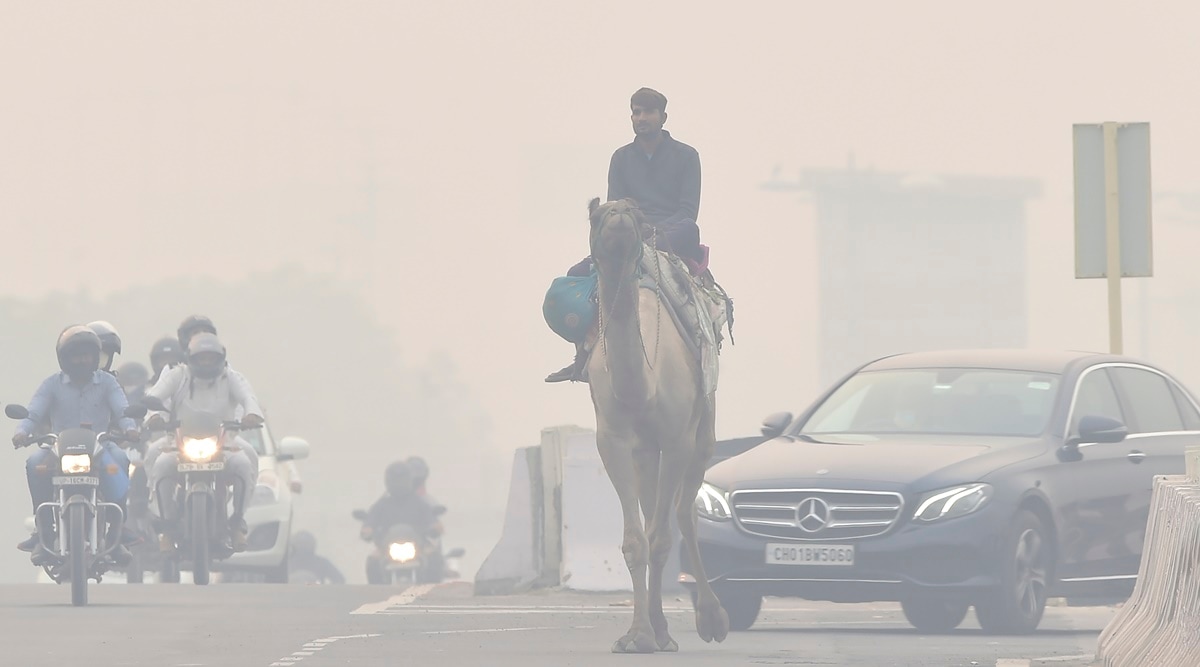 The analysis states that this winter, there was only a marginal improvement in Delhi’s air quality, despite it being the wettest one in over a century. (File Photo)
The analysis states that this winter, there was only a marginal improvement in Delhi’s air quality, despite it being the wettest one in over a century. (File Photo) The overall contribution of local and regional sources to PM 2.5 levels in the national capital during winter is higher than the contribution from stubble burning, an analysis of air pollution levels in the past winter by the Centre for Science and Environment (CSE) has revealed.
“Winter gets smoggy even without the stubble smoke,” notes the analysis by Anumita Roychowdhury and Avikal Somvanshi at CSE. In the 52 days in October, November and December last year, the average concentration of stubble fire smoke in Delhi was 28 ug/m3 per day. The contribution of other sources was 151 ug/m3, more than 80% of the average concentration of 179 ug/m3. This was similar to previous winters when an average of 32 ug/m3 was found to be from stubble burning, and 159 ug/m3 from other sources. The analysis uses data from the SAFAR forecasting system, which provides the contribution of stubble smoke as a percentage, to arrive at these figures.
“Smoke from stubble fires only tips over the local-regional pollution load, which is already elevated due to [winter] inversion, to severe category,” the report states, adding that smog episodes are recorded even in late December when stubble burning doesn’t happen.
The average PM2.5 level this winter, from October 1 to February 28, was 172 ug/m3, similar to 173 ug/m3 in 2019-20, and lower than the 189 ug/m3 in 2020-21. The peak PM 2.5 concentration this winter (516 ug/m3) was lower than the two preceding ones — 542 ug/m3 in 2020-21, and 549 ug/m3 in 2019-20.
The analysis states that this is only a marginal improvement in Delhi’s air quality, despite it being the wettest winter in over a century. The study also throws light on the long smog episodes this winter — especially a 10-day period that started around Diwali and was the longest one in the last three years. Another winter smog episode was observed from December 21, lasting for nine days and much longer than the previous winter’s that remained for only three. The average PM 2.5 concentration during the December smog episode was 340 ug/m3, even higher than the one around Diwali when the average was 318 ug/m3.
“Relatively slow dissipation of smog episodes this year compared to previous year points towards increase in the overall pollution load in the larger air shed (all the gains of lockdowns lost) and ineffectiveness of ad-hoc pollution control efforts,” the report states, adding that the higher intensity of the smog episode in December also points towards increased contribution of local sources.
The contribution of local sources is also highlighted by the large variations in pollution levels at different monitoring stations in the city — the average PM2.5 concentration this winter was highest at Jahangirpuri (252 ug/m3) and lowest at Aya Nagar (117 ug/m3). Stations at Anand Vihar, Wazirpur, Mundka, Rohini and Ashok Vihar also recorded an average above 200 ug/m3.
Among cities in the National Capital Region (NCR), Delhi recorded the most “severe” air days this season (25 days), followed by Ghaziabad (16 days). Smog episodes were also found to be more intense and longer in Delhi. Though Delhi recorded an improvement in seasonal average PM 2.5 concentration this winter, other NCR towns like Hapur, Bhiwani and Manesar witnessed deteriorating air quality this season.
The 2-4 “good” air days that were recorded in the region “coincided with heavy rainfall and are not a result of on-ground pollution control”, the analysis notes. According to the study, the “meteorological advantage” of more rainfall this winter compared to the previous three “did not give much reprieve to the city as rapid build-up in-between rain-spells and formation of smog episodes during rainless periods kept overall seasonal average toxically high”.
- The Indian Express website has been rated GREEN for its credibility and trustworthiness by Newsguard, a global service that rates news sources for their journalistic standards.

